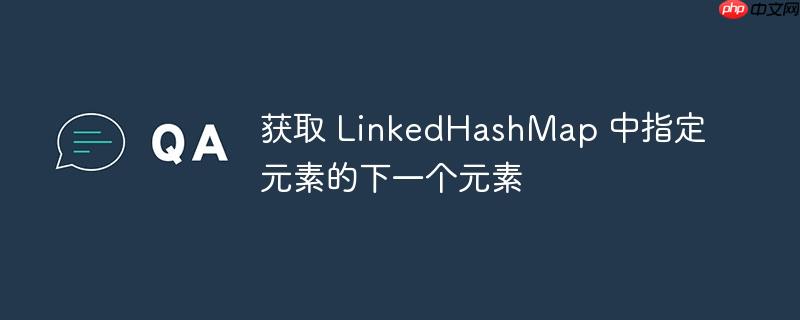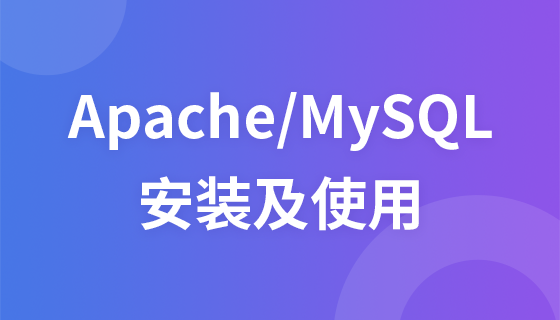
本文介绍了在 Java 的 LinkedHashMap 中,如何高效地获取指定键值对的下一个键值对。 针对非多线程环境,提供了两种实现方式:一种是基于键列表索引,另一种是基于迭代器。 通过代码示例详细展示了这两种方法的实现,并分析了各自的优缺点,帮助开发者选择最适合的方案。
LinkedHashMap 是一种特殊的 HashMap,它保留了元素插入的顺序。在某些场景下,我们需要根据已知的键来获取其在 LinkedHashMap 中的下一个元素。本文将介绍两种实现方式,并分析它们的优缺点。
这种方法首先获取 LinkedHashMap 中所有键的列表,然后找到目标键的索引,并返回索引加一位置的键值对。
import java.util.ArrayList;
import java.util.LinkedHashMap;
import java.util.List;
import java.util.Map;
public class LinkedHashMapNextElement {
public static Map.Entry<Integer, String> getNextEntryByIndex(LinkedHashMap<Integer, String> map, Integer key) {
List<Integer> keys = new ArrayList<>(map.keySet());
int index = keys.indexOf(key);
if (index < 0 || index >= keys.size() - 1) {
return null; // Key not found or it's the last element
}
int nextKey = keys.get(index + 1);
return Map.entry(nextKey, map.get(nextKey));
}
public static void main(String[] args) {
Map<Integer, String> map = new LinkedHashMap<>();
map.put(10, "C");
map.put(20, "C++");
map.put(50, "JAVA");
map.put(40, "PHP");
map.put(30, "Kotlin");
Map.Entry<Integer, String> nextEntry = getNextEntryByIndex((LinkedHashMap<Integer, String>) map, 50);
if (nextEntry != null) {
System.out.println("Next entry for key 50: " + nextEntry.getKey() + " = " + nextEntry.getValue());
} else {
System.out.println("No next entry found for key 50.");
}
}
}注意事项:
这种方法使用迭代器遍历 LinkedHashMap 的 entrySet,直到找到目标键。 找到目标键后,迭代器的下一个元素就是我们需要的下一个键值对。
import java.util.LinkedHashMap;
import java.util.Map;
public class LinkedHashMapNextElement {
public static Map.Entry<Integer, String> getNextEntryByIterator(LinkedHashMap<Integer, String> map, Integer key) {
boolean found = false;
for (Map.Entry<Integer, String> entry : map.entrySet()) {
if (found) {
return Map.entry(entry.getKey(), entry.getValue());
}
if (entry.getKey().equals(key)) {
found = true;
}
}
return null; // Key not found or it's the last element
}
public static void main(String[] args) {
Map<Integer, String> map = new LinkedHashMap<>();
map.put(10, "C");
map.put(20, "C++");
map.put(50, "JAVA");
map.put(40, "PHP");
map.put(30, "Kotlin");
Map.Entry<Integer, String> nextEntry = getNextEntryByIterator((LinkedHashMap<Integer, String>) map, 50);
if (nextEntry != null) {
System.out.println("Next entry for key 50: " + nextEntry.getKey() + " = " + nextEntry.getValue());
} else {
System.out.println("No next entry found for key 50.");
}
}
}注意事项:
两种方法都可以用来获取 LinkedHashMap 中指定键的下一个元素。 基于键列表索引的方法需要额外的空间来存储键列表,而基于迭代器的方法不需要。 在实际应用中,可以根据具体情况选择最适合的方法。 如果需要频繁地获取下一个元素,并且 LinkedHashMap 的大小很大,那么基于迭代器的方法可能更有效。 此外,还可以考虑使用第三方库,例如 Apache Commons Collections,它提供了更丰富的集合操作。
以上就是获取 LinkedHashMap 中指定元素的下一个元素的详细内容,更多请关注php中文网其它相关文章!

每个人都需要一台速度更快、更稳定的 PC。随着时间的推移,垃圾文件、旧注册表数据和不必要的后台进程会占用资源并降低性能。幸运的是,许多工具可以让 Windows 保持平稳运行。




Copyright 2014-2025 https://www.php.cn/ All Rights Reserved | php.cn | 湘ICP备2023035733号